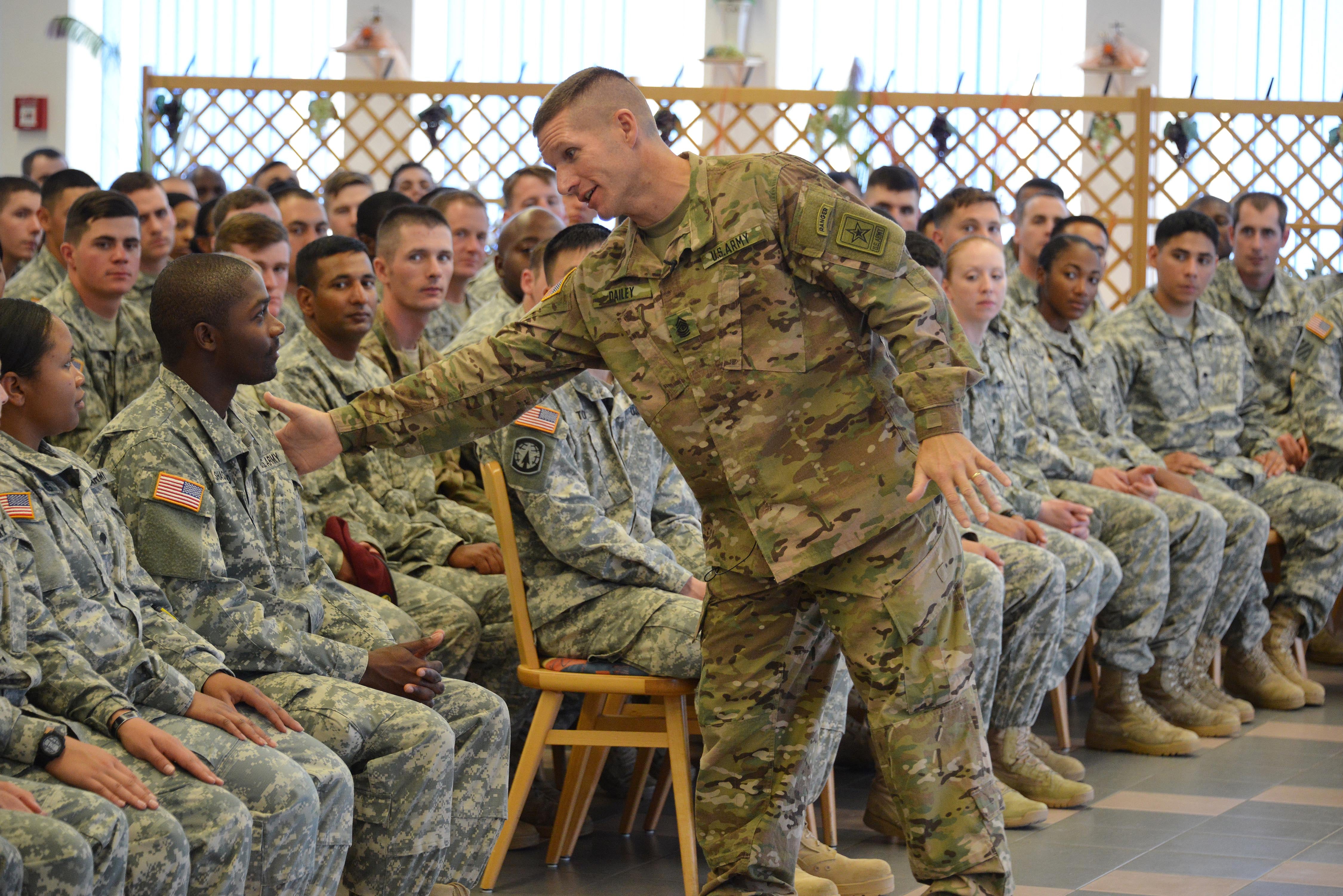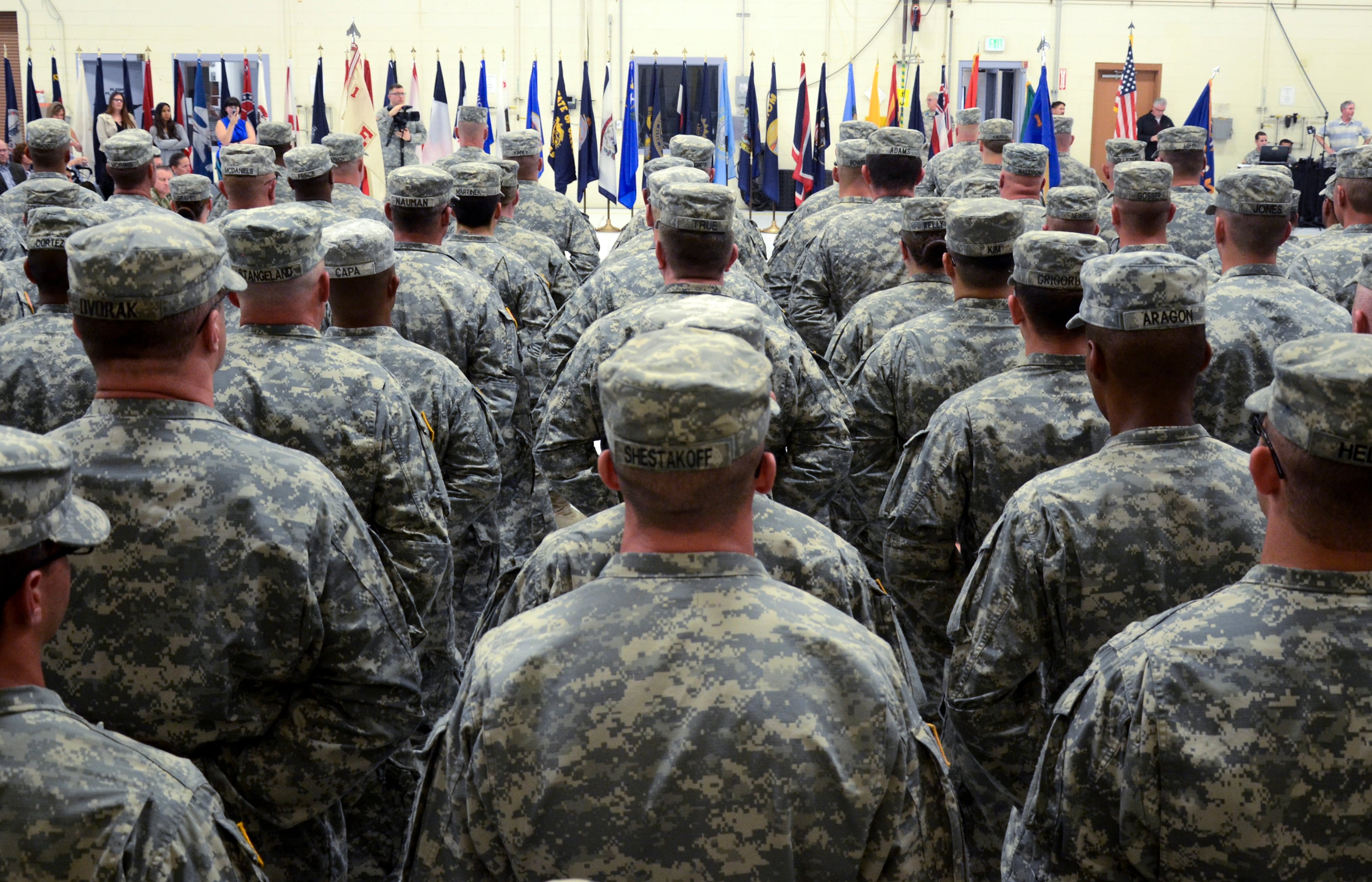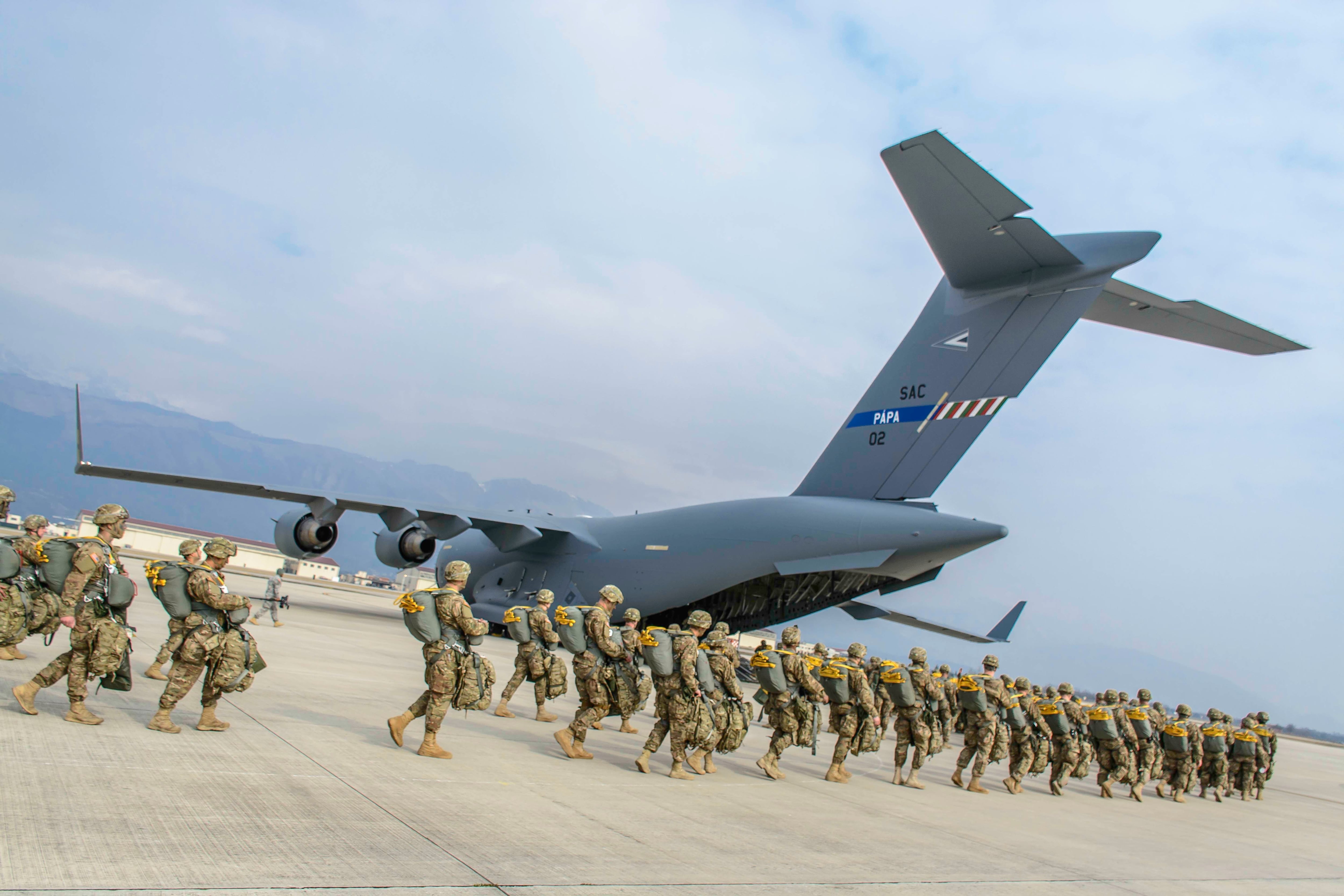As part of its push to make sure all soldiers are ready to deploy, the Army is working on a proposal to pay extra cash to soldiers who do.
Soldiers in places such as Iraq and Afghanistan rightly receive hazardous duty pay and other incentives, said Sergeant Major of the Army Dan Dailey, but the Army also is now sending more and more soldiers on non-combat tours that take them away from home.
Units are rotating into South Korea for nine-month tours. Soldiers are going on three- to four-month Pacific Pathways exercises. They are training troops in Ukraine. They are spending time in Europe working with NATO allies as part of Operation Atlantic Resolve. They are conducting military-to-military exchanges through their regional alignment with Africa.
"We want soldiers to want to deploy," Dailey said. "We want them to be proud about it."
As a result, the Army is looking at a new cash incentive similar to the Navy's sea pay or its new Hardship Duty Pay-Tempo.
"Are we incentivizing deployability?" Dailey said. "We're looking at that right now, to adapt a similar program for the Army."
This would give soldiers an extra boost "when you're away from home, in the field, downrange, deployed, away from family," Dailey said. This could mean more pay for soldiers in Japan or Malaysia or Kenya. Or even possibly those away from home for weeks at a time for a rotation at the National Training Center at Fort Irwin, California.
Career sea pay is designed to reward sailors for time spent at sea, and it provides an incentive to sailors in the busiest seagoing jobs to stay in the service. The monthly sea pay can range from $60 to $750 for the most senior enlisted sailors; most junior enlisted qualify for $100 to $300 a month. Sea pay also is cumulative, meaning the amount of pay a sailor can earn increases with the amount of time they spend at sea.
The Navy and Marine Corps also last year began paying sailors and Marines Hardship Duty Pay-Tempo, which rewards those who deploy for long periods of time. The new deployment pay gives sailors and Marines $16.50 a day for every day they're deployed past 220 days, roughly seven and a half months.
"We're working an initiative to propose to the [Army] secretary and [chief of staff]," Dailey said, adding that he would like the Army version of this pay to be cumulative.
If Army leaders green-light the plan, it would still have to be approved by the Defense Department and Congress.
'Every soldier deployable'
This latest proposal is part of a larger Army effort to reduce the number of non-deployers in uniform.
"I want every soldier deployable in the Army," Dailey said. "It's about building readiness in the United States Army, doing what's right, taking care of soldiers and getting them healthy — but cracking down on it, too."
Army Chief of Staff Gen. Mark Milley has said that readiness is the service's top priority.

Sergeant Major of the Army Dan Dailey wants to offer bonus money for soldiers serving in non-combat tours overseas.
Photo Credit: Gertrud Zach/Army
"Our fundamental task is like no other — it is to win in the unforgiving crucible of ground combat," Milley wrote in his first message to the force since being sworn in as the service's top officer. "We must ensure the Army remains ready as the world's premier combat force. Readiness for ground combat is — and will remain — the U.S. Army's #1 No. 1 priority."
About 102,500 soldiers — active, Guard and Reserve — are currently non-deployable, according to data from the Army. That's about 10 percent of the total Army. Of those soldiers, about 50,000 are active-duty, 28,000 are in the Guard, and about 25,000 are in the Reserve.
Officials told Army Times that is the lowest rate the Army has seen since 2011, but Dailey believes the service can do better.
"It's going to take a lot of work, I get that, and soldiers are going to get hurt, I understand that," Dailey said. "This is on us. We've got to do our jobs, get soldiers healthy, get them to their appointments, [and] get them the medical attention they need. We've got to get them physically fit, we've got to get them eating right, [and] we've got to hold soldiers to standards. Some of that is at play here, too."
The Army is forming a working group, bringing together its personnel, medical and legal experts, to tackle this issue, Dailey said.
"We need to review all the policies and procedures that were put in place over the last couple decades," he said.
Who is non-deployable?
About three-quarters of non-deployable soldiers are sidelined for medical reasons. This could be short-term conditions such as a soldier needing a root canal, soldiers who have not received their shots before a deployment, or someone with a sprained ankle, said Lt. Col. Jerome Pionk, an Army spokesman.
There also are soldiers who need more than 30 days to heal, for example a soldier who needs surgery to repair a torn ACL and the follow-on recovery time, Pionk said.
A third category of soldiers are those who have significant wounds, injuries or illnesses, such as a soldier who's been in a car accident and needs back surgery, a soldier who's fighting cancer, or a soldier who's lost a limb in combat, he said.
Other reasons a soldier can't be deployed include legal and administrative reasons.
The Army's "non-deployable" stats do not include the 105,000 soldiers who are in schools, training, or transitioning between duty stations.
The Army must make sure it's tracking soldiers' profiles and assisting them as they get the care they need so they're "fit to fight," Dailey said. "If we can't do that, then we've got to transition these soldiers for life."
When asked about a recent National Public Radio report that said the Army, since 2009, has separated 22,000 soldiers for misconduct after they returned from Iraq or Afghanistan and had been diagnosed with mental health problems, Dailey said every soldier's case is unique.
"It's hard to comment on that from a generalized term because there's no generalization to those things," Dailey said. "They're individual soldier acts of indiscipline, and they're also individual care needs if they're injured, even if those injuries are not visible."

Soldiers with the Army's 1st Battalion, 168th Aviation Regiment, participate in a deployment ceremony, Oct. 4 for their deployment early next year to the Middle East.
Photo Credit: Spc. Danielle Gregory/Army
It is a tough issue, Dailey said.
"You've got to treat every soldier with dignity and respect, you've got to evaluate every soldier's case with regards to their propensity to serve in the future based on their condition and the recommendations from their doctor and command," he said. "Commanders are given tough choices."
Because every soldier's case is different, especially in cases of medical non-deployers, it's critical for soldiers to see their doctors, and for those doctors to properly evaluate each soldier's condition and eventual ability to continue serving, Dailey said.
Dailey used himself as an example.
"I have to be able to get up and lead soldiers every single day, even as the sergeant major of the Army," he said. "If I can't, then I have to be accepting of that and realize I can't do this anymore. The organization needs somebody to lead it that can, and that's what I've got to do as a soldier and say, 'I got it, I'm not capable of doing this anymore, and it's time for me to transition.'"
The Army is reviewing its medical retention standards.
"What are the standards for coming on active duty? And what are the standards for retaining on active duty? And what are the standards for deployability?" he said. "Those have all changed throughout time. We have to make sure they're consistent."
The working group is going to come together "right away and take all the approaches we need to get soldiers healthy, to get soldiers deployable, to get soldiers to transition," Dailey said.
'We're still deploying'
Soldiers are paid to fight and win wars when asked to do so, Dailey said.
The Army focused "real heavily" on this issue during the height of the wars in Iraq and Afghanistan, Dailey said.
"We're still deploying," he said. "We've got to keep the focus on this. As we get smaller, it's just as important as it was before."
The Army's top personnel officer likened the force to a professional sports team.
"For us in the personnel business, that means every single soldier needs to be able to get on the field and play his or her position," said Lt. Gen. James McConville, the Army G-1. "If soldiers are not deployable, or are unable to do their job, we are going to have to take a hard look at their ability to stay in the Army. … This will become more important as the Army gets smaller."

About 10 percent of the Army is considered non-deployable. Three-quarters of these soldiers are non-deployable for medical reasons.
Photo Credit: Army
The active Army has gone from a wartime high of 570,000 soldiers to about 490,000 today. It is slated to reach an end-strength of 450,000 by the end of fiscal year 2018.
Over the next three years, the Army National Guard will shrink from 350,000 soldiers to 335,000, while the Army Reserve will drop from 198,000 to 195,000.
Dailey said he realizes that it's a tall order to have every single soldier deployable.
"We are going to have soldiers [who are hurt]," he said. "But we also have got to be ready. That is the No. 1 mission for the United States Army. We've got to be ready to fight when asked to do so, and we need every soldier to do that, and we've got to find the way to get there."
Michelle Tan is the editor of Army Times and Air Force Times. She has covered the military for Military Times since 2005, and has embedded with U.S. troops in Iraq, Afghanistan, Kuwait, Haiti, Gabon and the Horn of Africa.





